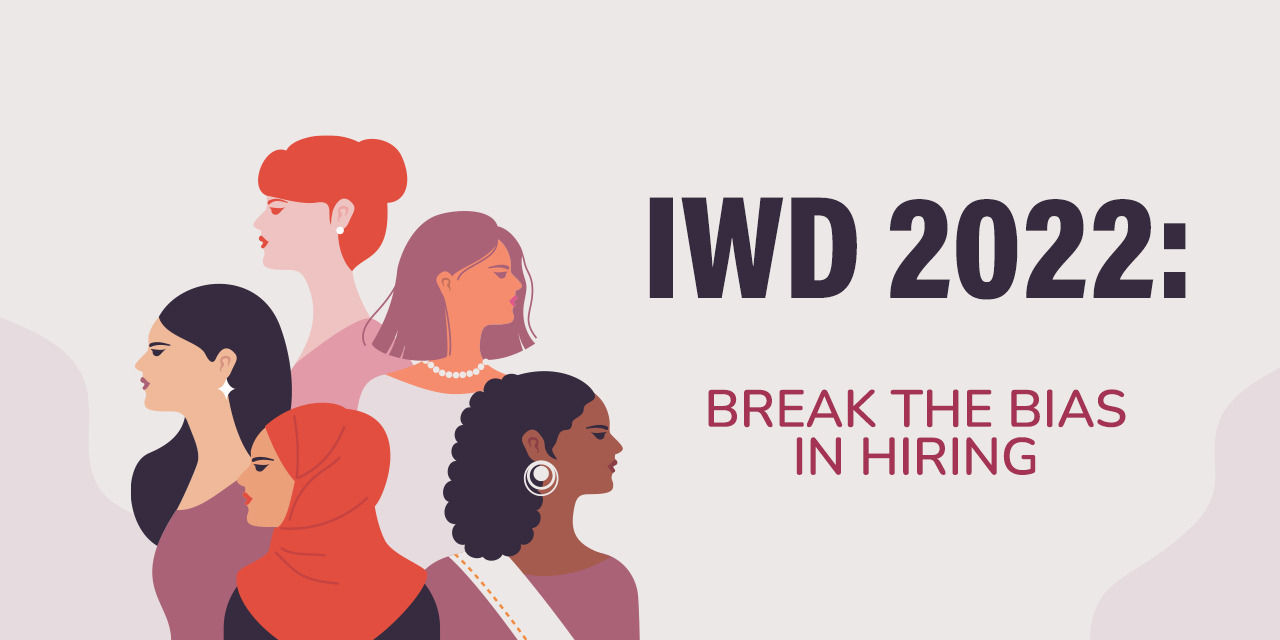In celebration of International Women’s Day and this year’s theme, #BreaktheBias, we throw light on the importance of using powerful hiring tools as we work towards creating a gender equal world.
As the world changes, it becomes more important than ever for women to be represented equally at all levels and across all areas of businesses, especially STEM-related roles: science, technology, engineering and business. Previously, women had to fight uphill battles to take back the credit attributed to their male counterparts. Many were even barred from job opportunities because of their sex. Outer space was off limits as well; for years, they couldn’t become a part of America’s space programme because scientists believed putting hormonal women around a “complicated machine” could cause problems. While women continue to fight for equal rights and access to opportunities, there is still a long way to go.
Organizations now acknowledge gender diversity issues and express intentions to do better, but progress toward gender equity has been incremental at best and not much has been done to break the bias in hiring. A recent research by Harvard Business Review ‘Nature: Human Behavior’ explores one reason for why noble intentions only go so far: Gender inequities are baked into the structure of the informal recruitment process.
According to a survey by Insync, hiring managers from larger organizations were more likely to interview men even if they thought that women appropriately matched the attributes for the role. In simpler words, male candidates are more likely to make it to the interview process and ultimately get the job even if the female appears to be a better fit.
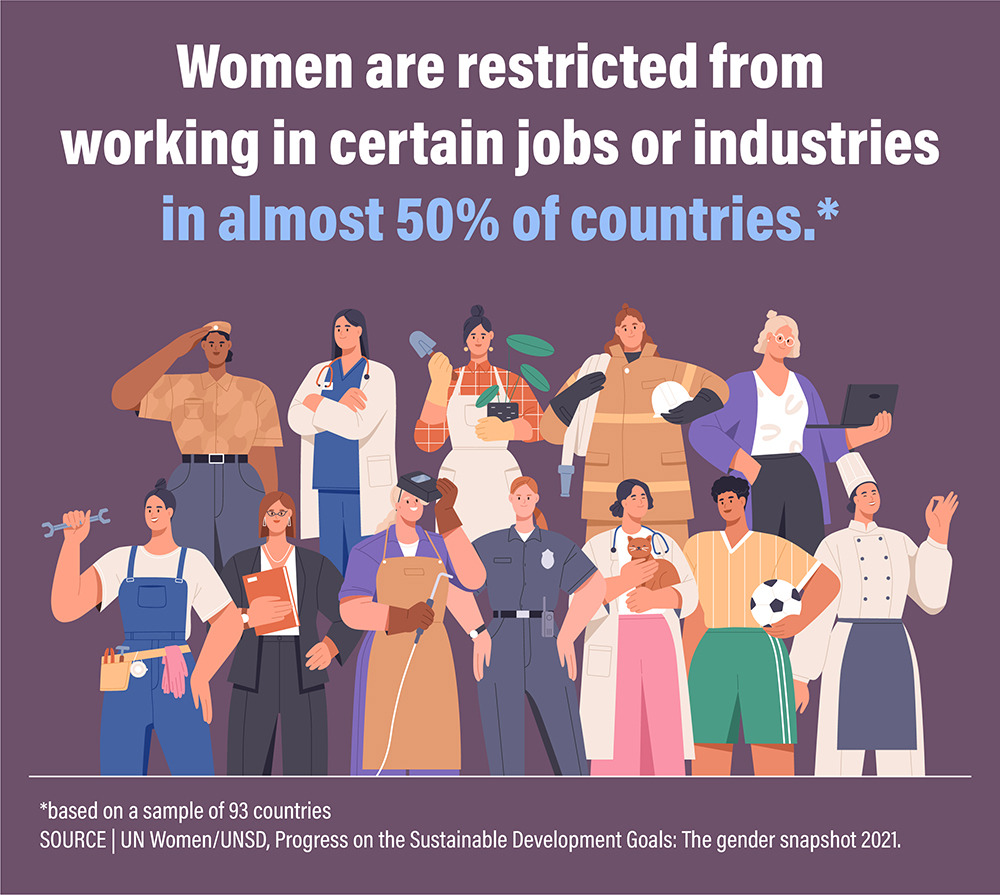
No matter where we take data from, the numbers are quite distressing. Gender bias and sexual discrimination are prevalent in the workplace.
- 5 of the 14 top barriers women face in the workplace are related to discrimination and gender bias.
- Women are 25-46% more likely to be hired with blind applications or auditions.
- Women are 79 times more likely to be hired when there are at least two female candidates in the finalist pool.
- Both men and women are twice as likely to hire a male candidate.
- Men view unconscious bias as the number one barrier women face in their careers.
- 42% of women in the United States say they have faced gender discrimination on the job, including 7% who were denied a job or promotion due to their gender.
- 4% of C-Suite roles are held by women of color.
- In Fortune 500 companies, men account for 80% of corporate leadership positions and 94% of CEOs.
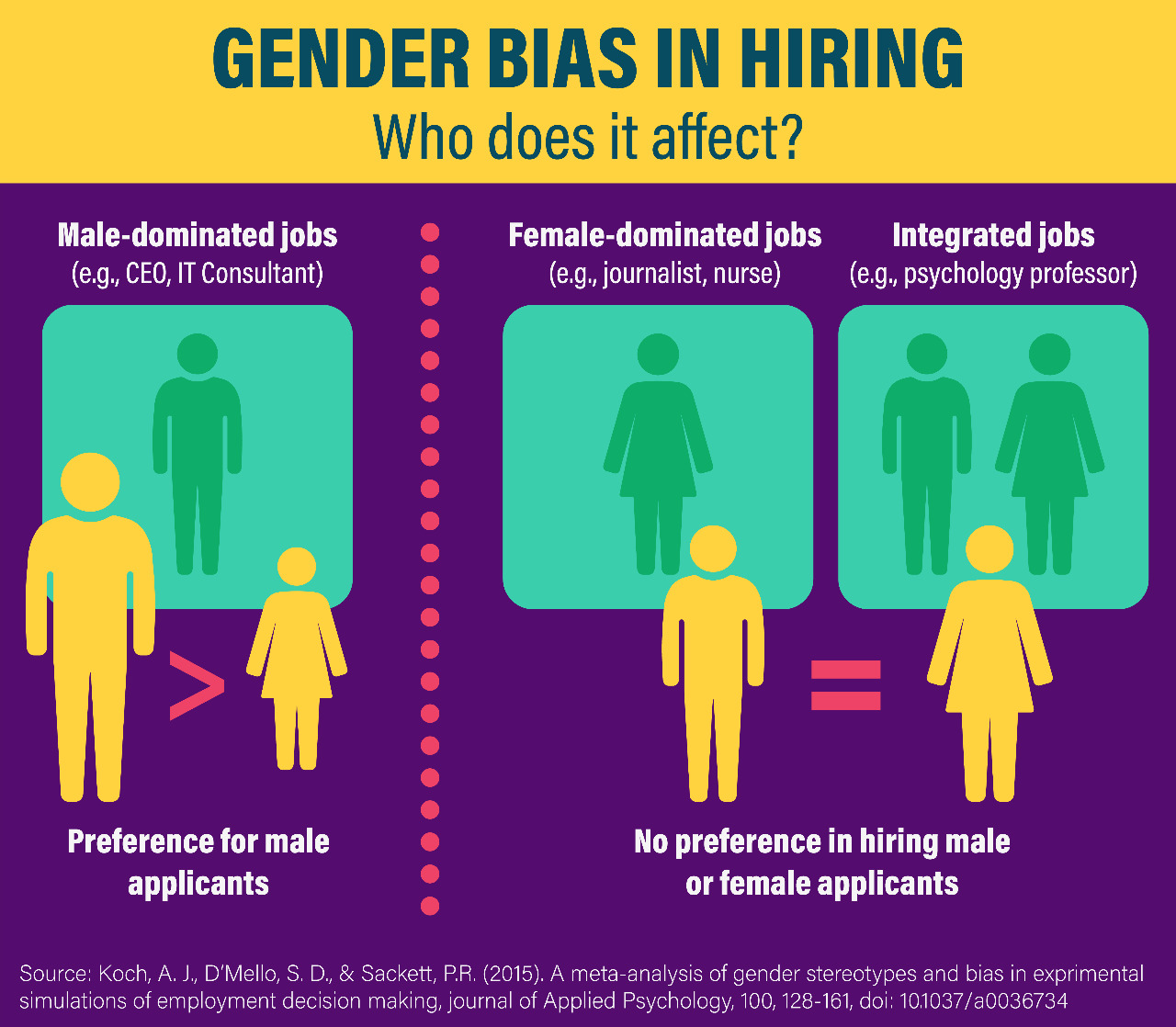
Why Is It So Important to Dismantle Disparities
Creating a gender-diverse workforce is no longer a ‘nice-to-have’ or a laudable goal, it’ s a must-have. But why is it to so important to break the bias in hiring?
According to a Gallup study, a demographically diverse workforce can lead to better functioning teams and improved financial performance. The study was conducted on more than 800 business units from two companies that represented two different industries – retail and hospitality. Here’s what the study revealed:
- Gender-diverse business units in the retail company have 14% higher average comparable revenue than less-diverse business units (5.24% vs. 4.58%).
- Gender-diverse business units in the hospitality company show 19% higher average quarterly net profit ($16,296 vs. $13,702) than less-diverse business units.
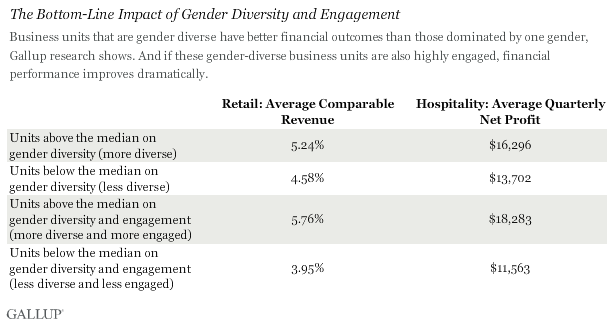
Another case study by 2019 McKinsey & Co. study explored the correlation between workplace diversity and financial performance using data from more than 1,000 companies and 15 countries. The study showed that companies in the top quartile for gender diversity on their executive teams were 25% more likely to experience above-average profitability than companies in the fourth quartile.
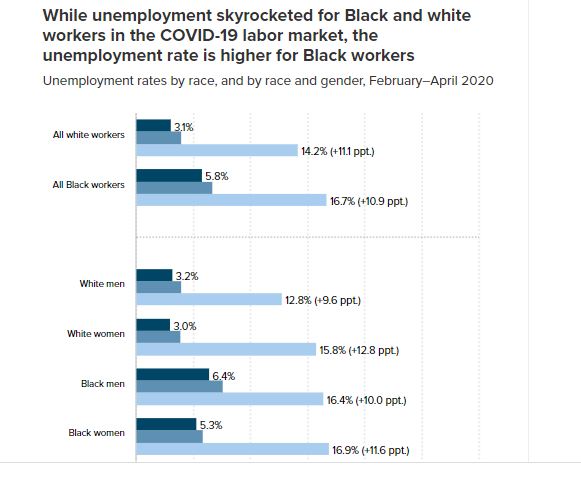
On the other hand, unconscious gender bias in hiring can result in hiring managers turning a blind eye to the best potential candidates. Moreover, it can also cost organizations millions through low staff retention and a failure to attract the very best and diverse candidates. It too can mean a low female representation at managerial level, despite results and evidence highlighting that women in higher board positions make for a more profitable organization.
Is It Easy to Break the Bias in Hiring?
Here’s what you can do to break the bias in hiring in all its different stages:
In Job Adverts
An important area of hiring that organizations need to consider is how the use of gender-coded language in job advertisements and vacancies can perpetuate existing group-based inequalities.
Sometimes the wording is more biased toward one gender than you realize. For instance, the use of the word “ninja” that increasingly appears in job descriptions in high tech may dissuade women from applying for the role as the word “ninja” seems to have masculine connotations. Gendered language runs rampant in online employment, and since there are different societal expectations for both and women, one or the other tends to suffer. In most cases, this tends to limit opportunities for women. Gendered languages could account for 125 million women worldwide being out of the labor force.
So, when drafting your job descriptions and advertisements, carefully examine the language that you’re using to avoid gendered job titles. Instead of using phrases that direct attention to a specific gender, smartly pick phrases to describe the behaviors you’re looking for. This not only helps combat gender bias but also helps in the hiring of those who are gender-fluid or non-binary.
In Screening and Pre-Employment Assessments
When it comes to screening with pre-employment tests, AI-based platforms can serve a great purpose. AI-powered tools like gamified assessments not only allow recruiters to identify the top-caliber candidates but also make unbiased decisions, so each candidate has an equal chance of getting selected regardless of their gender and organizations don’t lag behind their competitors.
Gamified assessments collect thousands of data points during the gameplay, thus reducing unconscious bias and allowing recruiters to make data-driven decisions.
In Interviews
Hiring professionals should add structure to the interviews by planning standardized questions beforehand, so they can fairly compare candidates. A mix of some icebreakers and easier questions and some technical questions relevant to the job role can be great when assessing applicants.
It is also imperative to elect a gender diverse interview panel to reduce the risk of unconscious gender bias. Even better, also extend this strategy by adding culturally diverse people from a range of age groups to mitigate the risk of bias.
